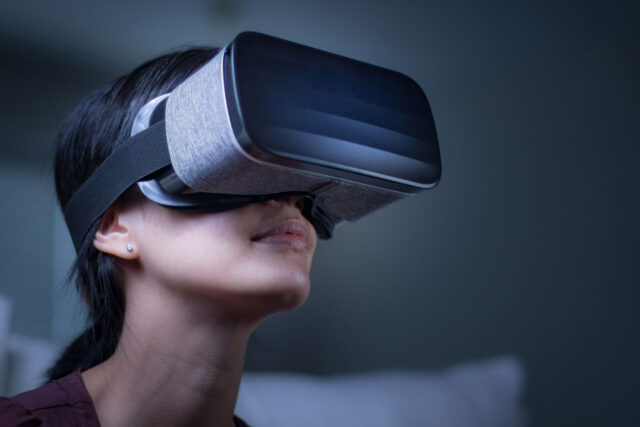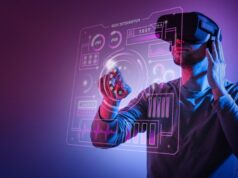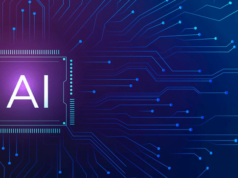Immersive Technologies: AR, VR, and MR Reshaping User Experiences
In the strong terrain of technology’s anticipated development, immersive technologies stand apart as imposing driving powers, restructuring the parts of user interaction with the mechanized domain. Augmented Reality (AR), Virtual Reality (VR), and Mixed Reality (MR) rise above their initial conditions in entertainment, ushering in a paradigm shift across various industries. Their influence loosens up past ordinary boundaries, introducing innovative solutions and paving the way for cutting-edge user experiences. This article embarks on an investigation into the domain of immersive technologies, unraveling their influence on user experiences, delving into most recent things, and contemplating the future they guarantee.
Understanding Immersive Technologies
Defining Augmented Reality (AR)
Augmented Reality (AR) mixes the advanced and actual universes, enhancing this present reality climate with PC produced information. AR overlays computerized content onto the user’s perspective on the actual world, creating an interactive and improved insight. AR applications range from straightforward smartphone-based solutions to modern headsets, offering assorted potential outcomes in gaming, schooling, healthcare, and that’s only the tip of the iceberg.
Venturing into Virtual Reality (VR)
Virtual Reality (VR) submerges users in a totally mimicked climate, disengaging from the actual world. Utilizing specific headsets, VR gives a sweeping encounter, often utilized in gaming, reenactments, and training. VR innovations continue to push boundaries, offering increasingly sensible and engaging experiences.
Navigating Mixed Reality (MR)
Mixed Reality (MR) is the mixture of AR and VR, blending the virtual and genuine universes to establish a climate where physical and advanced components coincide and interact. MR advancements have prepared for applications in fields like architecture, manufacturing, and training, providing users with more consistent integration of computerized content into their surroundings.
The Impact on User Experiences
User-Centric Experiences in Focus
Immersive technologies place user experiences at the front line of innovation. Whether it’s augmented reality solutions, virtual reality experiences, or mixed reality applications, the shared part is a complement on user-centric design. The supplement on creating interfaces that flawlessly integrate with the user’s regular climate refreshes engagement and convenience.
Augmented Reality Solutions
Augmented reality has risen above its initial relationship with versatile applications and gaming. Today, AR is making waves in various industries. In healthcare, specialists can use AR overlays during methodology, providing constant information and enhancing accuracy. Retailers utilize AR for virtual take a stab at experiences, allowing clients to imagine items prior to making a buy. These applications show how AR solutions take care of explicit requirements while enhancing user experiences in assorted settings.
Virtual Reality Innovations
The domain of virtual reality continues to observe groundbreaking innovations. VR applications stretch out past gaming, with advancements in fields like training and healthcare. For instance, clinical understudies can take part in practical careful reproductions, gaining active involvement with a controlled virtual climate. VR innovations can possibly democratize schooling and training, making immersive experiences open to a more extensive crowd.
Mixed Reality Advancements
Mixed reality advancements bring another aspect to user interaction. In architecture, MR permits architects to imagine building designs within the genuine space where development will happen. This streamlines the design interaction as well as empowers partners to more readily grasp the final item. MR UX design centers around creating intuitive interfaces that consistently integrate physical and computerized components, providing users with an intelligent and immersive experience.
Immersive Technology Trends
AR VR MR Integration
As technological advancements spread out, the distinctions between augmented reality, virtual reality, and mixed reality are becoming increasingly indistinct.Ongoing endeavors rotate around merging the remarkable limits of these immersive technologies, resulting in solutions that are more adaptable as well as significant areas of solidarity for more. The integration of augmented reality, virtual reality, and mixed reality holds the probability to convey a unified and unsurprising user experience prepared for adapting to various settings, ranging from gaming and entertainment to professional applications.
Cutting-Edge User Experiences
The excursion for cutting-edge user experiences drives continuous innovation in immersive technologies. Haptic input, reasonable designs, and typical user interfaces add to creating experiences that vibe more genuine and intuitive. Designers are pushing the boundaries of what is conceivable, aiming to give users experiences that meet as well as beat their considerations.
Future of Immersive Technologies
Looking forward, the future of immersive technologies appears promising. As hardware ends up being more refined and sensible, unlimited adoption is relatively close. The integration of man-made intelligence and machine learning will also redesign the capacities of AR, VR, and MR, personalizing experiences in perspective on user inclinations and direct. The development of lightweight and more pleasing contraptions will similarly add to increased user affirmation.
Navigating Specific Realms
Augmented Reality Development
Augmented reality development is evolving rapidly, with an accentuation on creating adaptable and open solutions. Designers are exploring better ways to deal with integrate AR into regular everyday presence, from course gadgets to instructive applications. The participation among AR and reenacted intelligence should provoke more intelligent and setting-aware augmented reality experiences, enriching the user’s interaction with the world.
Virtual Reality Applications
Virtual reality applications reach out past gaming and entertainment, making critical steps in schooling, healthcare, and corporate training. VR’s capacity to establish immersive conditions for learning and expertise development positions it as an integral asset in shaping the future of schooling and professional training. The potential for virtual travel, training reproductions, and cooperative work areas further grows the skylines of VR applications.
Mixed Reality Platforms
Mixed reality platforms are becoming integral to industries seeking innovative solutions. In manufacturing, MR platforms empower laborers to interact with computerized overlays while performing complex undertakings, improving proficiency and exactness. A coordinated effort in mixed reality spaces is likewise gaining a footing, with groups spread across the globe coming together in virtual conditions to cooperatively chip away at projects.
User Interface in AR, VR, and MR
VR User Engagement
User engagement in virtual reality depends vigorously on creating immersive and captivating conditions. The design of VR interfaces requires careful thought of user interaction, ensuring that route and activities feel normal within the virtual space. Hand tracking, signal acknowledgment, and voice orders add to a more intuitive VR user experience, enhancing engagement and presence.
MR UX Design
Mixed reality UX design revolves around impeccably integrating progressed parts into the genuine environment. This involves creating interfaces that answer genuine interactions, enhancing the feeling of presence and interaction. The test lies in ensuring that the automated substance lines up with the user’s surroundings and doesn’t upset the regular movement of their activities.
Immersive Tech Adoption
Enhancing UX with AR, VR, and MR
The adoption of immersive technologies hinges on their capacity to improve user experiences. Businesses are increasingly recognizing the worth of AR, VR, and MR in creating really engaging and paramount interactions with their items and administrations. From enhancing client engagement to improving worker training, immersive technologies offer an upper hand in a carefully determined world.
Augmented Reality Trends
Augmented reality trends exhibit the technology’s flexibility and potential. The ascent of AR glasses, for example, those created by tech goliaths, opens additional opportunities for sans-hands interactions and consistent integration of computerized information into regular day-to-day existence. The gamification of genuine exercises through AR applications continues to gain popularity, creating interactive and entertaining experiences for users.
Virtual Reality Advancements
Virtual reality advancements center around refining the hardware and software parts that add to a more reasonable and pleasant experience. Higher goal shows, decreased dormancy, and more immersive sound add to creating a feeling of presence in virtual conditions. The development of independent VR headsets further works on openness, allowing users to encounter VR without the requirement for a strong PC or control center.
Mixed Reality User Interaction
User interaction in mixed reality involves navigating both physical and modernized spaces simultaneously. Hand tracking, spatial awareness, and continuous mapping add to creating a predictable interaction between the user and the mixed reality environment. As MR platforms advance, the potential for extra regular and intuitive interactions will continue to create, expanding the applications of mixed reality in various industries.
The Immersive Technology Landscape
AR, VR, MR in User-Centered Design
The integration of AR, VR, and MR into user-centered design is reshaping how things and administrations are conceptualized and conveyed. Designers right now consider the spatial and immersive parts of technology, ensuring that the user experience lines up with the ordinary movement of human interaction. User testing and analysis play a fundamental part in refining immersive technology interfaces, ensuring they address the issues and inclinations of various user gatherings.
Conclusion
Immersive technologies encompassing augmented reality, virtual reality, and mixed reality are not simply shaping our electronic landscape; they’re on an exceptionally essential level altering how we attract with our surroundings. Their impact connects past enriching gaming experiences; these technologies are spearheading extraordinary changes in essential areas like healthcare, training, and manufacturing. The development and association of AR, VR, and MR guarantee a future defined by means of predictable and immersive modernized experiences, enhancing our organization with both the high level domain and the genuine world. Embracing user-centric design principles nearby advancements in hardware and software sets the inevitability of immersive technologies playing an increasingly pressing position in our work, learning attempts, and overall interaction with our ongoing conditions.








